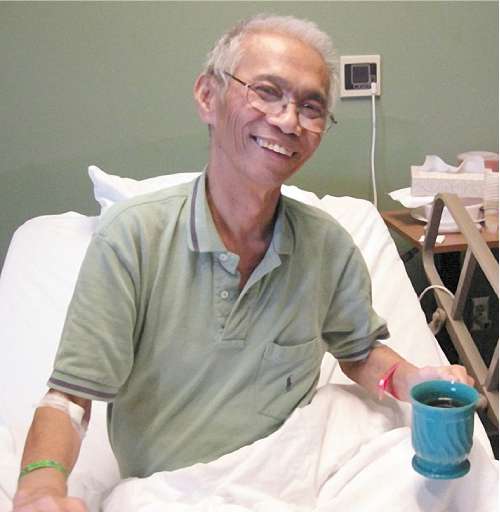Dith Pran: Survivor of the 'Killing Fields'

It was a perhaps inescapable irony that while millions of people around the world knew the story of Dith Pran – the courageous reporter's assistant who survived the horrors of Cambodia's "Killing Fields" – most would have associated his name with the face of another man.
In 1984, almost a decade after Dith was forced into a murderous labour camp by the Khmer Rouge and five years after he was reunited with the New York Times reporter for whom he was working, Roland Joffé's film The Killing Fields brought the horrors of the Cambodian genocide to the wider world. The role of Dith was central to the story, and he was played in the movie by the Cambodian actor Haing Ngor – himself a Killing Fields survivor. His performance was so powerful and memorable that it won him an Oscar for Best Supporting Actor.
Dith would not have been bothered that he had been "eclipsed" in this way. From 1980, when he started a new life in the United States, he divided his time into two lives; one as a photographer for The New York Times, which had helped him move to the US, and the other as a campaigner who spread the word about the genocide in his own country. Dith, who established a holocaust awareness project, said in an interview shortly before his death: "What matters is that we remember and we keep talking and maybe some day we will mean it when we say about a holocaust 'Never again'."
Dith Pran was born in 1942 at Siem Reap, the site of the remarkable Angkor Wat ruins that date to the 12th century. His father was a public-works official and having learned French at school Dith taught himself English. During the 1960s he worked as a translator for US officials in the capital, Phnom Penh, but as the country's relations with the US worsened he took other jobs. When the country's leader Prince Norodom Sihanouk was deposed in a 1970 coup and Cambodian troops went to war with the Khmer Rouge, Dith returned to Phnom Penh and worked as an interpreter for foreign correspondents.
In April 1975 he was working with the reporter Sydney Schanberg when the Maoist-inspired forces finally reached the capital. He was offered the chance to leave the country but chose to stay and work, deciding that telling the world of the horror that was taking place was more important. After Dith, Schanberg and two other western journalists were almost killed by the Khmer Rouge, they sought refuge in the French Embassy. Dith, however, did not have a foreign passport and French officials claimed his presence there could lead to others being killed.
In such circumstances Dith left the compound, disguised himself as a simple taxi driver in order to avoid the fury of a régime insistent on wiping out all "intellectuals" and worked his way north towards Siem Reap. It was on his way north that he discovered and gave name to the Killing Fields where the Khmer Rouge forces were scattering the bodies of nearly two million people they had either murdered or who else had died from disease or starvation.
For four years he worked in labour camps, often eating little more than a spoon of rice a day or whatever else he could find. Eventually, invading Vietnamese forces brought an end to the Khmer Rouge rule and Dith was able to escape to neighbouring Thailand. His reunion with Schanberg at a refugee camp in October 1979 is one of the most compelling moments in Joffé's film.
Schanberg said of his relationship with the Cambodian: "I'm a very lucky man to have had Pran as my reporting partner and even luckier that we came to call each other brother. His mission with me in Cambodia was to tell the world what suffering his people were going through in a war that was never necessary. It became my mission too. My reporting could not have been done without him."
Last month, Dith spoke of his fight against pancreatic cancer in the Star-Ledger, the local newspaper in New Jersey, where he lived. Cared for by his first wife, Ser Meoun, from whom he was divorced but who continued to bring him noodles as his strength faded, and his companion, Bette Parslow, Dith said he was not afraid of death but that he did not want to waste his life. Dith said: "I want to save lives, including my own, but Cambodians believe we just rent this body. It is just a house for the spirit, and if the house is full of termites, it is time to leave."
Andrew Buncombe
Dith Pran, journalist and campaigner: born Siem Reap, Cambodia 27 September 1942; married Ser Meoun (three sons, one daughter; marriage dissolved); died New Brunswick, New Jersey 30 March 2008.
Join our commenting forum
Join thought-provoking conversations, follow other Independent readers and see their replies
Comments
Bookmark popover
Removed from bookmarks